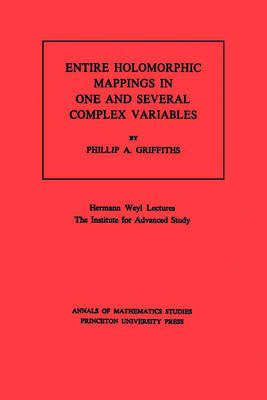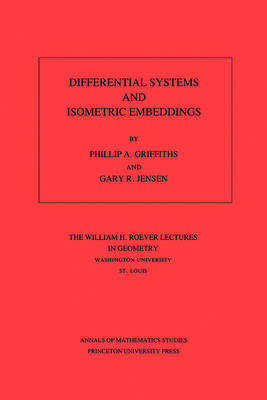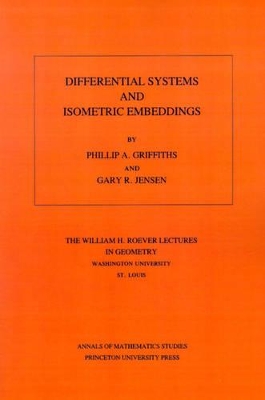Annals of Mathematics Studies
3 primary works • 5 total works
Book 85
Entire Holomorphic Mappings in One and Several Complex Variables. (AM-85)
by Phillip A Griffiths
Published 21 February 1976
The present monograph grew out of the fifth set of Hermann Weyl Lectures, given by Professor Griffiths at the Institute for Advanced Study, Princeton, in fall 1974. In Chapter 1 the author discusses Emile Borel's proof and the classical Jensen theorem, order of growth of entire analytic sets, order functions for entire holomorphic mappings, classical indicators of orders of growth, and entire functions and varieties of finite order. Chapter 2 is devoted to the appearance of curvature, and Chapter 3 considers the defect relations. The author considers the lemma on the logarithmic derivative, R. Nevanlinna's proof of the defect relation, and refinements of the classical case.
Book 114
Differential Systems and Isometric Embeddings.(AM-114)
by Phillip A Griffiths and Gary R. Jensen
Published 2 March 2016
Book 183
Mumford-Tate Groups and Domains
by Mark Green, Phillip A Griffiths, and Matt Kerr
Published 18 April 2012
Mumford-Tate groups are the fundamental symmetry groups of Hodge theory, a subject which rests at the center of contemporary complex algebraic geometry. This book is the first comprehensive exploration of Mumford-Tate groups and domains. Containing basic theory and a wealth of new views and results, it will become an essential resource for graduate students and researchers. Although Mumford-Tate groups can be defined for general structures, their theory and use to date has mainly been in the classical case of abelian varieties. While the book does examine this area, it focuses on the nonclassical case. The general theory turns out to be very rich, such as in the unexpected connections of finite dimensional and infinite dimensional representation theory of real, semisimple Lie groups. The authors give the complete classification of Hodge representations, a topic that should become a standard in the finite-dimensional representation theory of noncompact, real, semisimple Lie groups.
They also indicate that in the future, a connection seems ready to be made between Lie groups that admit discrete series representations and the study of automorphic cohomology on quotients of Mumford-Tate domains by arithmetic groups. Bringing together complex geometry, representation theory, and arithmetic, this book opens up a fresh perspective on an important subject.
They also indicate that in the future, a connection seems ready to be made between Lie groups that admit discrete series representations and the study of automorphic cohomology on quotients of Mumford-Tate domains by arithmetic groups. Bringing together complex geometry, representation theory, and arithmetic, this book opens up a fresh perspective on an important subject.
Mumford-Tate Groups and Domains: Their Geometry and Arithmetic (Am-183)
by Mark Green, Phillip A Griffiths, and Matt Kerr
Published 1 January 2012
Differential Systems and Isometric Embeddings.(AM-114), Volume 114
by Phillip A Griffiths and Gary R. Jensen
Published 21 May 1987
The theory of exterior differential systems provides a framework for systematically addressing the typically non-linear, and frequently overdetermined, partial differential equations that arise in differential geometry. Adaptation of the techniques of microlocalization to differential systems have led to recent activity on the foundations of the theory; in particular, the fundamental role of the characteristic variety in geometric problems is now clearly established. In this book the general theory is explained in a relatively quick and concrete manner, and then this general theory is applied to the recent developments in the classical problem of isometric embeddings of Riemannian manifolds.



